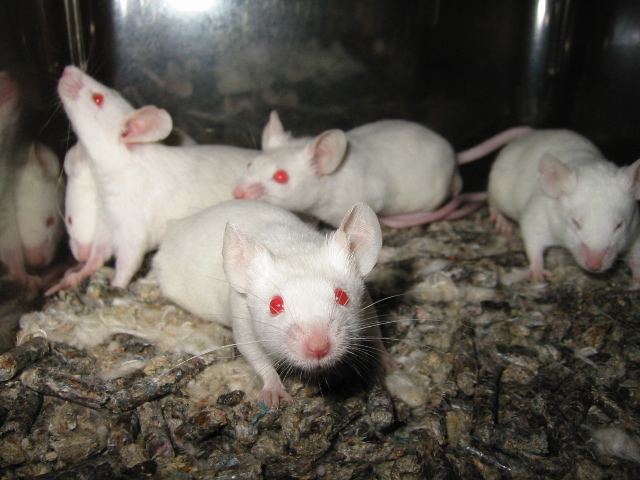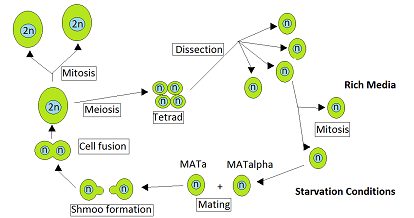|
Chlamydomonas Moewusii
'' Chlamydomonas moewusii'' is a species of unicellular green alga belonging to the genus ''Chlamydomonas''. ''C. moewusii'' is typically a freshwater species and occupies a significant position as a model organism for various scientific studies due to its relatively simple cellular structure and ease of cultivation. Taxonomy '' Chlamydomonas moewusii'' was first published by Gerloff in 1940. In his research, Gerloff examined cultures of '' Chlamydomonas eugametos'' sourced from the Berlin Institute of Plant Physiology. His findings contradicted the description provided by Moewus(1933), indicating the presence of a papilla and a significantly thinner membrane than previously described and illustrated by Moewus. Distribution ''Chlamydomonas moewusii'' is commonly found in freshwater and soil environments worldwide. Morphology ''Chlamydomonas moewusii'' is a unicellular organism with a characteristic chloroplast-containing cell. Individual cells are typically small, around ... [...More Info...] [...Related Items...] OR: [Wikipedia] [Google] [Baidu] |
Unicellular
A unicellular organism, also known as a single-celled organism, is an organism that consists of a single cell, unlike a multicellular organism that consists of multiple cells. Organisms fall into two general categories: prokaryotic organisms and eukaryotic organisms. Most prokaryotes are unicellular and are classified into bacteria and archaea. Many eukaryotes are multicellular, but some are unicellular such as protozoa, unicellular algae, and unicellular fungi. Unicellular organisms are thought to be the oldest form of life, with early organisms emerging 3.5–3.8 billion years ago. Although some prokaryotes live in colonies, they are not specialised cells with differing functions. These organisms live together, and each cell must carry out all life processes to survive. In contrast, even the simplest multicellular organisms have cells that depend on each other to survive. Most multicellular organisms have a unicellular life-cycle stage. Gametes, for example, are reprodu ... [...More Info...] [...Related Items...] OR: [Wikipedia] [Google] [Baidu] |
Alga
Algae ( , ; : alga ) is an informal term for any organisms of a large and diverse group of photosynthetic organisms that are not plants, and includes species from multiple distinct clades. Such organisms range from unicellular microalgae, such as cyanobacteria, '' Chlorella'', and diatoms, to multicellular macroalgae such as kelp or brown algae which may grow up to in length. Most algae are aquatic organisms and lack many of the distinct cell and tissue types, such as stomata, xylem, and phloem that are found in land plants. The largest and most complex marine algae are called seaweeds. In contrast, the most complex freshwater forms are the Charophyta, a division of green algae which includes, for example, ''Spirogyra'' and stoneworts. Algae that are carried passively by water are plankton, specifically phytoplankton. Algae constitute a polyphyletic group because they do not include a common ancestor, and although eukaryotic algae with chlorophyll-bearing plastids seem ... [...More Info...] [...Related Items...] OR: [Wikipedia] [Google] [Baidu] |
Chlamydomonas
''Chlamydomonas'' ( ) is a genus of green algae consisting of about 150 species of unicellular organism, unicellular flagellates, found in stagnant water and on damp soil, in freshwater, seawater, and even in snow as "snow algae". ''Chlamydomonas'' is used as a model organism for molecular biology, especially studies of flagellum, flagellar motility and chloroplast dynamics, biogenesis, and genetics. One of the many striking features of ''Chlamydomonas'' is that it contains ion channels (channelrhodopsins) that are directly activated by light. Some FLU (plant gene), regulatory systems of ''Chlamydomonas'' are more complex than their Homology (biology), homologs in Gymnosperms, with evolutionarily related Regulation of gene expression, regulatory proteins being larger and containing additional Protein domain, domains. Molecular phylogeny studies indicated that the traditional genus ''Chlamydomonas'' as defined using morphological data, was polyphyletic within Volvocales. Many s ... [...More Info...] [...Related Items...] OR: [Wikipedia] [Google] [Baidu] |
Model Organism
A model organism is a non-human species that is extensively studied to understand particular biological phenomena, with the expectation that discoveries made in the model organism will provide insight into the workings of other organisms. Model organisms are widely used to research human disease when human experimentation would be unfeasible or unethical. This strategy is made possible by the common descent of all living organisms, and the conservation of metabolic and developmental pathways and genetic material over the course of evolution. Research using animal models has been central to most of the achievements of modern medicine. It has contributed most of the basic knowledge in fields such as human physiology and biochemistry, and has played significant roles in fields such as neuroscience and infectious disease. The results have included the near- eradication of polio and the development of organ transplantation, and have benefited both humans and animals. From 19 ... [...More Info...] [...Related Items...] OR: [Wikipedia] [Google] [Baidu] |
Chlamydomonas Eugametos
''Chlamydomonas'' ( ) is a genus of green algae consisting of about 150 species of unicellular flagellates, found in stagnant water and on damp soil, in freshwater, seawater, and even in snow as " snow algae". ''Chlamydomonas'' is used as a model organism for molecular biology, especially studies of flagellar motility and chloroplast dynamics, biogenesis, and genetics. One of the many striking features of ''Chlamydomonas'' is that it contains ion channels ( channelrhodopsins) that are directly activated by light. Some regulatory systems of ''Chlamydomonas'' are more complex than their homologs in Gymnosperms, with evolutionarily related regulatory proteins being larger and containing additional domains. Molecular phylogeny studies indicated that the traditional genus ''Chlamydomonas'' as defined using morphological data, was polyphyletic within Volvocales. Many species were subsequently reclassified (e.g., '' Oogamochlamys, Lobochlamys''), and many other "''Chlamydomonas' ... [...More Info...] [...Related Items...] OR: [Wikipedia] [Google] [Baidu] |
Heterothallism
Heterothallic species have sexes that reside in different individuals. The term is applied particularly to distinguish heterothallic fungi, which require two compatible partners to produce sexual spores, from homothallic ones, which are capable of sexual reproduction from a single organism. In heterothallic fungi, two different individuals contribute nuclei to form a zygote. Examples of heterothallism are included for ''Saccharomyces cerevisiae, Aspergillus fumigatus, Aspergillus flavus'', '' Penicillium marneffei'' and ''Neurospora crassa''. The heterothallic life cycle of ''N. crassa'' is given in some detail, since similar life cycles are present in other heterothallic fungi. Certain heterothallic species (such as ''Neurospora tetrasperma'') are called "pseudo-homothallic". Instead of separating into four individual spores by two meiosis events, only a single meiosis occurs, resulting in two spores, each with two haploid nuclei of different mating types (those of its paren ... [...More Info...] [...Related Items...] OR: [Wikipedia] [Google] [Baidu] |
Chlamydomonadaceae
Chlamydomonadaceae is a family of algae within the order Chlamydomonadales. Traditionally, it has been defined as containing single-celled flagellates with a cell wall. Cells of the Chlamydomonadaceae are motile and have one, two, or four flagella. The cell body is covered in a cell wall, with the protoplast entirely or partially lined up next to the wall. Cells are uninucleate (i.e. with one nucleus). There is generally a single chloroplast, which is often cup-shaped or sometimes stellate or discoid; pyrenoids may be present or absent. Some species lack chlorophyll entirely and are saprotrophic. Contractile vacuoles may or may not be present. There is usually a single eyespot. Asexual reproduction occurs when the cell protoplast divides to form two, four, or eight daughter cells, with cell walls forming while still in the parent cell wall. Before cell division, the flagella usually disappear. Daughter cells are typically liberated when the parent cell wall gelatinizes, or th ... [...More Info...] [...Related Items...] OR: [Wikipedia] [Google] [Baidu] |
Plants Described In 1940
Plants are the eukaryotes that form the Kingdom (biology), kingdom Plantae; they are predominantly Photosynthesis, photosynthetic. This means that they obtain their energy from sunlight, using chloroplasts derived from endosymbiosis with cyanobacteria to produce sugars from carbon dioxide and water, using the green pigment chlorophyll. Exceptions are parasitic plants that have lost the genes for chlorophyll and photosynthesis, and obtain their energy from other plants or fungi. Most plants are multicellular organism, multicellular, except for some green algae. Historically, as in Aristotle's biology, the plant kingdom encompassed all living things that were not animals, and included algae and fungi. Definitions have narrowed since then; current definitions exclude fungi and some of the algae. By the definition used in this article, plants form the clade Viridiplantae (green plants), which consists of the green algae and the embryophytes or land plants (hornworts, liverworts ... [...More Info...] [...Related Items...] OR: [Wikipedia] [Google] [Baidu] |



